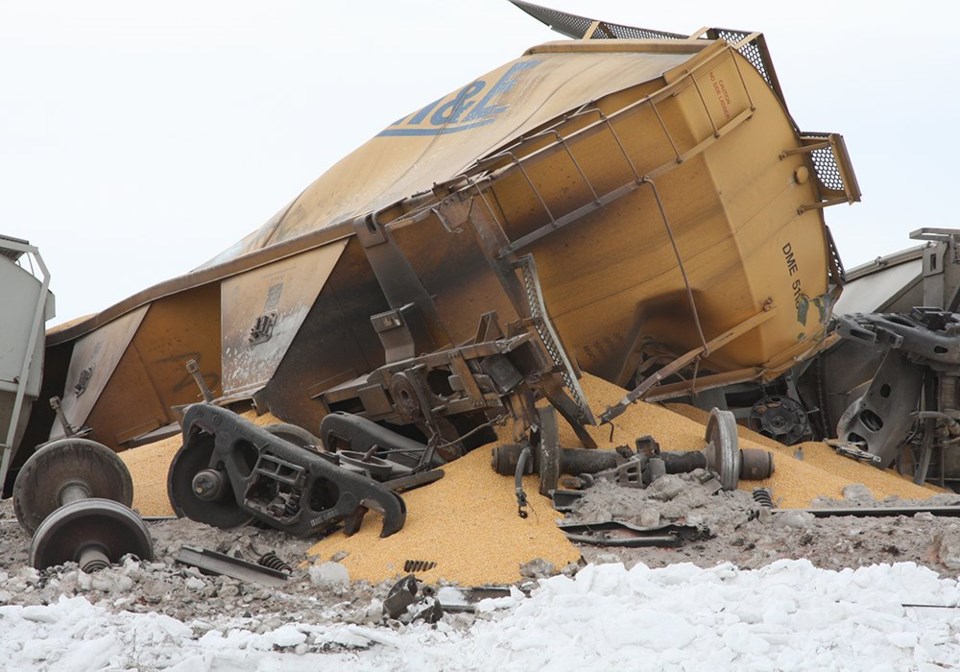WESTERN PRODUCER — Corn spilled in train derailments could still feed livestock if the buyer, seller and transporter agree.
The Canadian Food Inspection Agency clarified this week that corn spilled from cars isn’t always buried, as was suggested after a recent accident involving 34 cars of corn on a Canadian Pacific Railway line near Drinkwater, Sask.
“My feeling is that the idea that disposal was the only option might be because that’s sometimes the easiest option,” said Randy Wiens, communications manager for Western Canada at the CFIA.
At news of the derailment, farmers and others suggested that during this time of feed shortages the corn should not be buried, as witnessed after other derailments, but cleaned up and fed. Wiens said that is possible.
He said when a derailment occurs, any product still in the cars can be transferred to another train or truck and continue on its way to the feedlot. Corn that falls on the ground could be contaminated by snow, dirt or ballast. Wiens said that element of “lost control” presents concerns from a plant health perspective and could result in a prohibition of movement order, along with an order to dispose.
Deep burial is just one option.
“We’re more concerned in those circumstances about the plant health risks than we are with the feed because we’re assuming that the people on the feed side will make sure the product is still suitable for cattle feed,” he said.
The transporter, buyer and seller of the corn are all involved in coming up with the plan.
Feed corn is regulated differently than corn for propagation; once it is spilled, it falls under the latter regulations.
“If you don’t want to do deep burial, then you have to give us a plan that shows that the salvage material is transported in a way that prevents spills, scattering or unauthorized spread, that it gets routed directly to a facility that’s going to be doing the management of the product, and that can be milling, making into pellets or cleaning,” said Wiens.
“And then as soon as possible after arrival at whatever facility you’re going to take the product to, all of those screenings must be converted into pellets or milled for feed use, or cleaned. Whatever measure you’re going to take, you have to do it ASAP.”
Any corn that is left over or not processed must be disposed of under a CFIA-approved plan.
That could include burning, if permitted, burial or any other method that prevents the spread of pests and weeds.
Wiens said the CFIA at that point would still be open to milling or pelletizing for feed, and provides regulatory flexibility as long as plant protection measures are followed.
Burial is often simpler and cheaper but is not a CFIA directive, he said. The decision is made by the parties based on commerce.
“If you’ve got a solid plan, we’ll authorize it,” said Wiens.
“If the plan looks good that they’re going to keep it under control, that it’s not going to be seed crumbs from the spill all the way to the nearest plant, leaving a trail of corn to follow, as long as they’ve got those controls in place, then we’re open to that.”
He said CFIA was still in discussion with the parties after the Drinkwater derailment and couldn’t say what had happened to that corn.
He also said plant health requirements are dependent on country of origin. The corn coming into Western Canada is from the United States and could contain a pest that doesn’t exist in Canada.
“If Canadian corn spilled, it would be a different situation because we know the status of corn grown in Canada in terms of pests,” he said.
However, even within Canada there are movement controls on certain commodities to limit diseases and pests.

